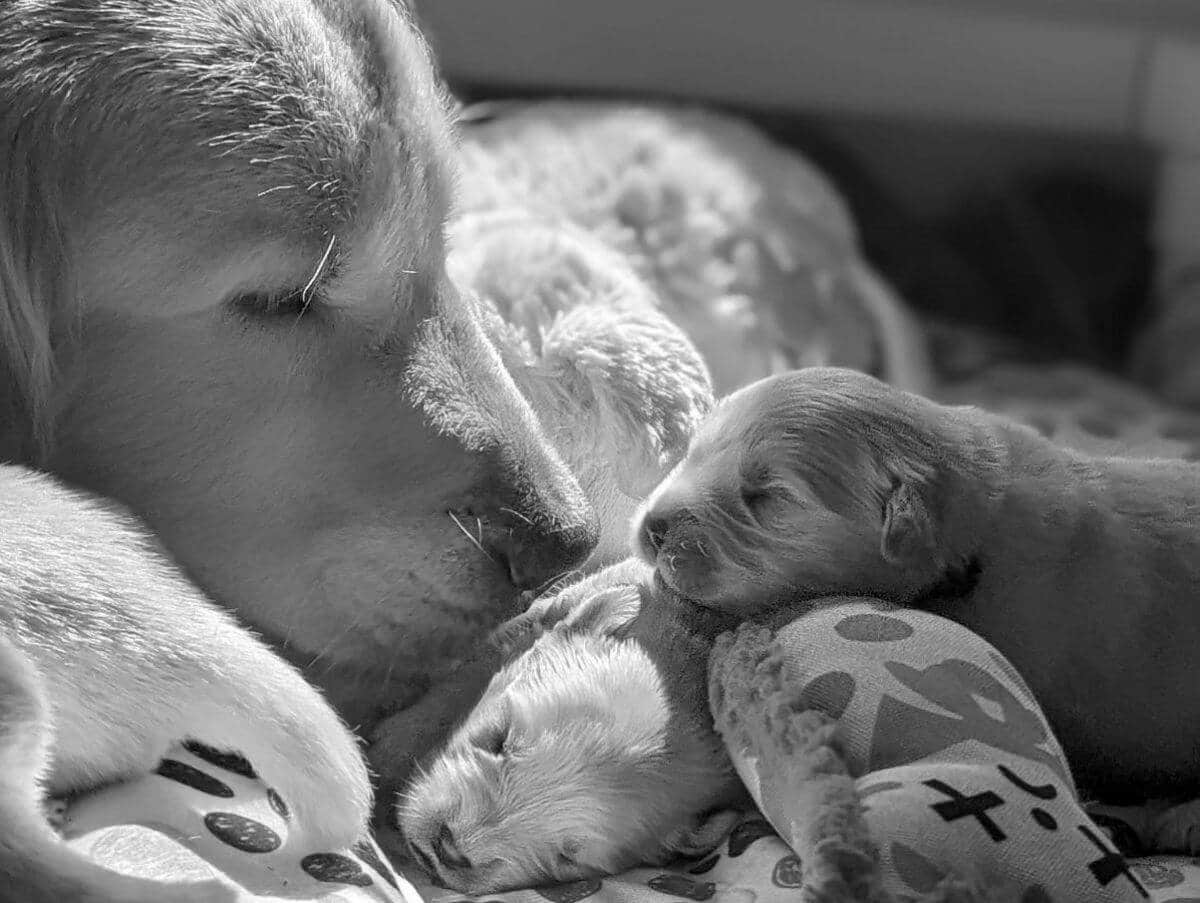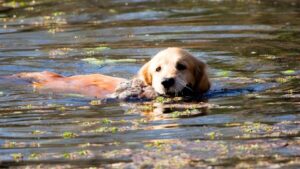
The Golden Retriever Breed: Discover These Gentle and Versatile Dogs
Discover the essence of the Golden Retriever, known for their intelligence and gentle spirit. Find out what makes them a perfect companion.
Home » Meet The Breeds » Golden Retriever
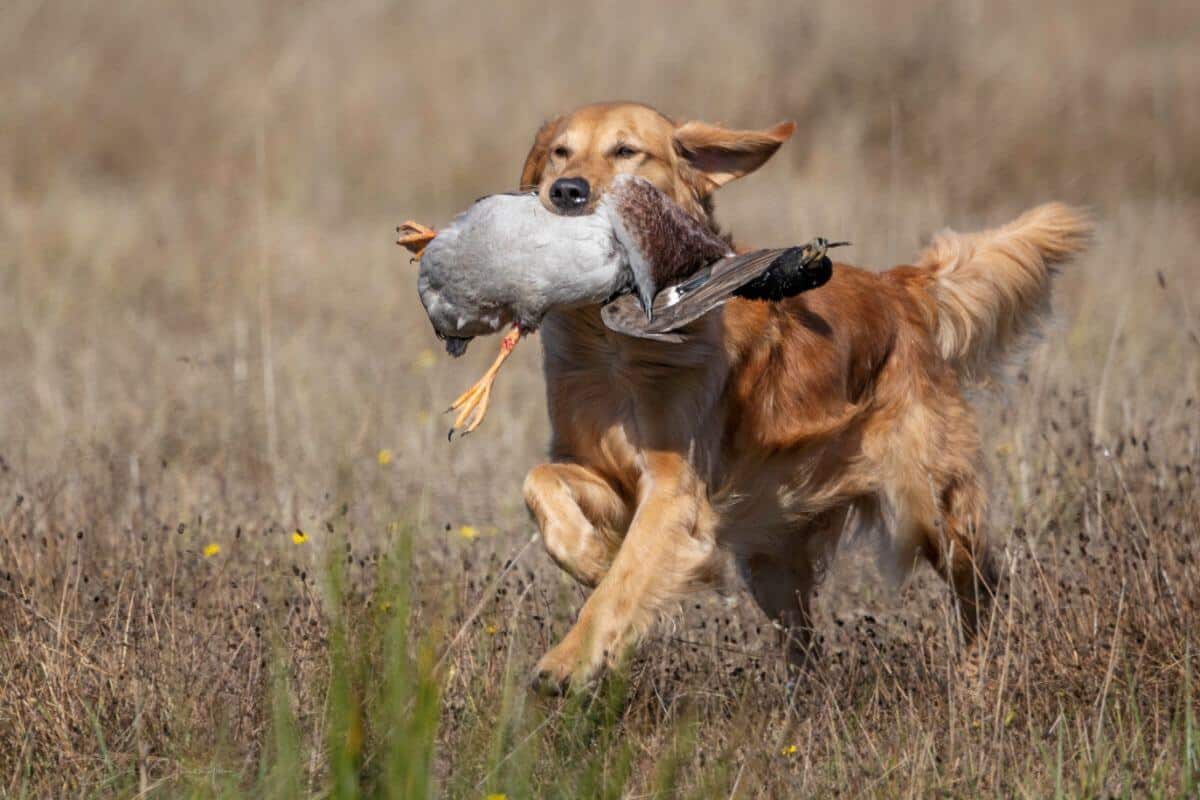

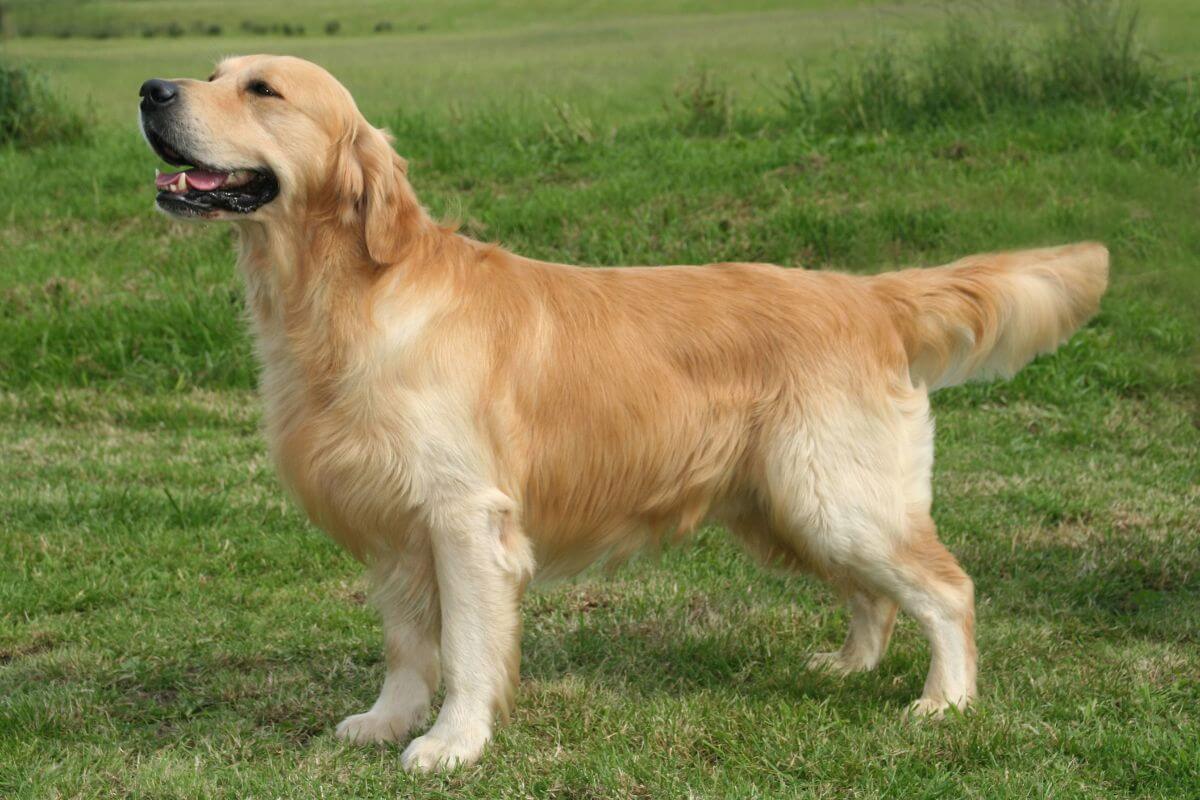
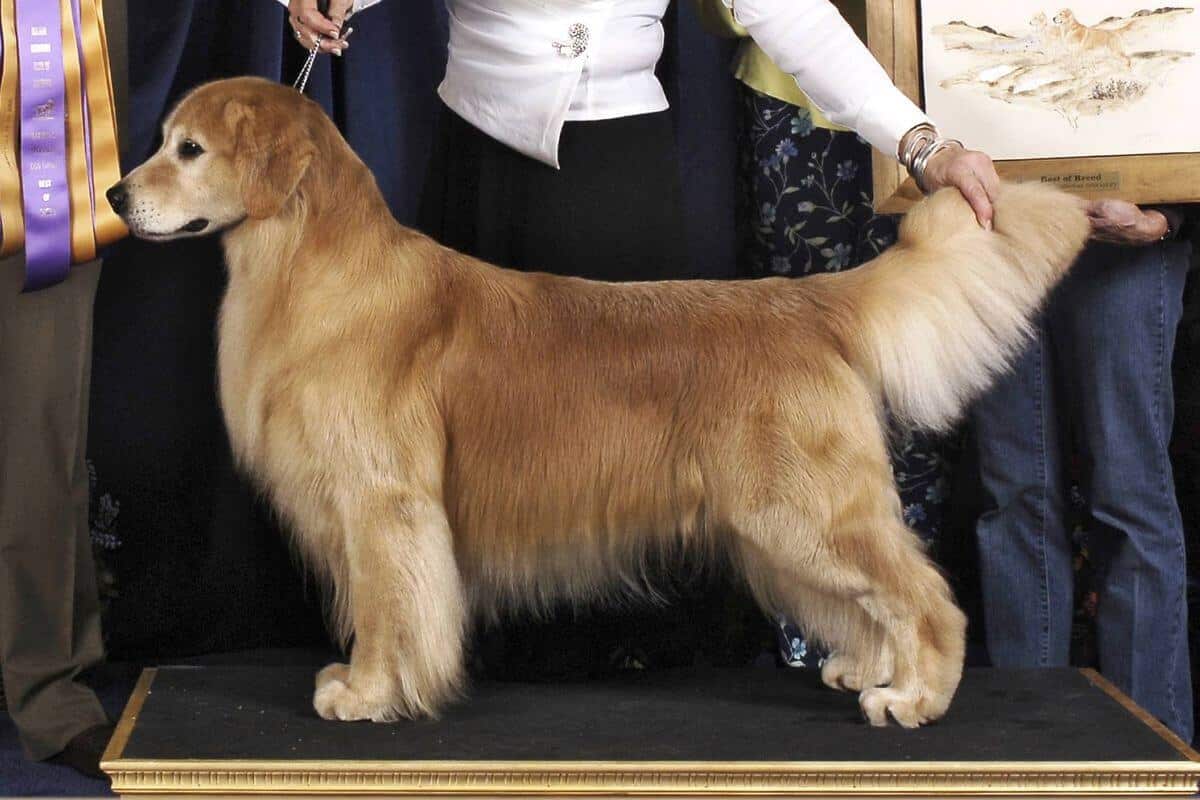

The Golden Retriever, with its radiant coat and amiable disposition, has long been one of the most cherished dog breeds in the United States and around the world. Originating from the rugged highlands of Scotland and bred primarily for retrieving upland birds and waterfowl, the breed quickly gained favor due to its exceptional temperament and versatility. Whether as a loyal companion, diligent worker, or show-stopping champion, the “Golden” embodies the fine qualities of the quintessential family dog, remaining ever-enthusiastic, adaptable, and loving.
Sporting
21.5 – 24 inches
55 – 75 pounds
10 – 12 years
| Country of Origin | Scotland |
|---|---|
| Bred For | Bird Hunting, Search & Rescue, Service Dog, Companionship |
| Known For | Gold Coat, Kindly Expression, Friendliness, Trainability |
| Popularity | High |
| Temperament | Friendly, Reliable, Trustworthy |
| Activities | Hunting, Field Trials, Service Dog, Therapy Dog, Dog Sports, Conformation Shows |
The legacy of the Golden Retriever traces back to the misty highlands of Scotland in the mid-19th century. During a period when hunting was both a sport and a practical means of securing food, there arose a need for a dog that could adeptly retrieve game from both water and land.
The breed’s origins are credited to Dudley Marjoribanks, later known as Lord Tweedmouth. In the 1860s, seeking a proficient retriever with an excellent nose and a keen love for water, Lord Tweedmouth crossed a yellow retriever from a litter of black Wavy-Coated Retrievers with the now-extinct Tweed Water Spaniel. Subsequent crossings included Bloodhounds, Irish Setters, and more Tweed Water Spaniels, resulting in offspring that laid the foundation for today’s Golden Retriever.
Puppies were given as gifts to gamekeepers and gentlemen hunters who used the dogs primarily for hunting. The yellow retrievers quickly gained popularity outside private circles, however, not just for their prowess in the field but also for their friendly dispositions.
Official recognition of the breed has a storied history. The Royal Kennel Club (UK) acknowledged the Golden Retriever as a distinct breed in 1911. The American Kennel Club (AKC) followed suit in 1925, and the Fédération Cynologique Internationale (FCI) also offered its acknowledgment, thus cementing the breed’s global recognition.
From its humble beginnings in Scotland, the Golden Retriever has become one of the most popular and cherished breeds worldwide. Its initial role as a hunter’s companion has broadened immensely, with Goldens now serving as Search & Rescue Dogs, Therapy Dogs, and Assistance Dogs, and most importantly, as beloved family members.
Adult male Golden Retrievers typically stand between 23 and 24 inches tall at the withers. By contrast, mature females generally measure from 21.5 to 22.5 inches tall.
In terms of weight, males commonly weigh within the range of 65 to 75 pounds, while females tend to be somewhat lighter, often weighing between 55 to 65 pounds.
The Golden Retriever exhibits a harmonious balance of proportions. The breed displays a strong and active build, well-suited for its historical work in the field. The Golden’s body is slightly longer than it is tall, at a ratio of 12:11. Males possess a more substantial bone structure than females, but without coarseness. The substance and quality of the breed’s build emphasize its agility, strength, and reliable nature, essential traits for a dog initially bred for the demanding job of retrieving game in often difficult conditions.
Texture: The coat of the Golden Retriever is dense and water-resistant, consisting of a firm outer layer and a soft, insulating undercoat. This double coat varies in length but lies close to the body, being slightly wavy or straight.
| Standard Color | |
|---|---|
| Dark Golden | ee |
| Golden | ee |
| Light Golden | ee |
A Note About Color: The Golden Retriever’s color is a defining characteristic. The breed’s coat ranges in color from a light pale gold through a deep reddish gold, always with a “brilliant” hue. Feathering on the back of the legs, underbody, “pants,” and tail may be lighter in color. Some Goldens will have a few white hairs on the chest or toes, although this is not desirable, and many will exhibit a graying of the face and/or body with age. However, black spots or shadings, and any off-color areas, are undesirable in the breed.
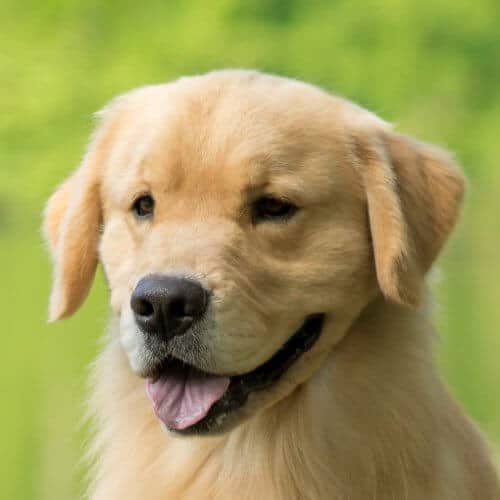
The tail of the Golden Retriever is a notable feature of the breed, exemplifying both strength and grace. Set on at a level with the back and reaching down to the hocks, it possesses a thick base that gradually tapers towards the tip. In motion, the tail is carried with a merry action but should never curl over the back.
The Golden Retriever’s tail is never docked; instead, it remains full and natural, showcasing its heavily feathered appearance that harmonizes beautifully with the rest of the coat.
The Golden Retriever, with its friendly demeanor and loyal nature, is a popular choice among serious dog enthusiasts and families alike. Owning this breed, however, comes with specific responsibilities and factors to consider that will nurture the relationship between the Golden and everyone in the home.
The Golden Retriever is typically a robust and healthy dog, blessed with a sturdy constitution. However, like all breeds and mixed breeds, the Golden can be susceptible to specific health conditions. Prospective owners should be aware of these potential issues and work closely with a trusted breeder and veterinarian to ensure their dog maintains optimal health throughout its life.
Lifespan: The average lifespan of a Golden Retriever ranges between 10 and 12 years, but with proper care, regular check-ups, and a balanced diet, many can thrive beyond these years.
The Golden Retriever, despite its general soundness, is predisposed to some health concerns, including:
Regular veterinary check-ups are essential for early detection of these and other potential health issues. Along with general wellness exams, specific tests for the eyes, hips, elbows, and heart are recommended to ensure that the Golden Retriever remains in the best possible health.
The Golden Retriever is renowned for its warm and approachable demeanor, making the breed one of world’s most treasured of all purebreds. The temperament of each dog will vary somewhat, but many shared characteristics all but define the breed.
The Golden is especially suitable for novice owners due to its patient and forgiving nature. The breed’s innate eagerness to please translates to a dog that is typically straightforward to train, although it thrives best with consistent guidance and positive reinforcement.
The breed possesses a high sensitivity level, being acutely in tune with its family’s emotions. This heightened empathy means the Golden resonates well in a positive, love-filled environment, but can be affected if exposed to frequent tension or raised voices.
Being an inherently social creature, the Golden Retriever cherishes companionship. Extended periods of solitude aren’t ideal for the breed, and a lonely Golden may show signs of separation anxiety, which can manifest as destructive behaviors or excessive barking.
The Golden’s sociable nature extends to its interactions with both humans and other animals. The breed generally has harmonious relationships with other dogs, especially when properly socialized from a young age. Its gentle and patient demeanor also makes the Golden an outstanding companion for children. The breed exhibits a natural tolerance and affection that endears it to families with young ones.
Furthermore, the Golden Retriever’s congenial disposition isn’t limited to familiar faces. These dogs tend to be welcoming and approachable, often greeting strangers with enthusiasm. This friendliness extends to an almost universal acceptance of other dogs, emphasizing the importance of early and consistent encouragement from a young age. While the breed’s warm nature is cherished by many, it’s worth noting that its tendency to greet almost everyone with a wagging tail means the Golden isn’t typically suited for guard duties.
The nutritional needs of a Golden Retriever evolve throughout the dog’s life, from the energetic puppy phase to the more sedate senior years. It’s essential to provide a balanced diet that aligns with each life stage to provide for each dog’s overall health and vitality.
When dealing with a puppy, it’s vital to feed specially formulated puppy food that caters to the pup’s rapid growth and energy needs. This stage often requires multiple meals each day, typically three or four, to distribute daily food intake and to support a puppy’s fast-growing body.
Transitioning to adulthood, the Golden Retriever will require a shift in its dietary needs. Adult dog foods are designed to maintain health, energy, and an ideal body weight, and the typical adult will consume between 2 to 3 cups of high-quality dry food every day, split into two meals. The exact amount, however, can vary based on factors such as age, metabolism, activity level, and overall health.
It’s crucial to monitor the Golden Retriever’s weight and adjust its food intake accordingly. The quantity of the food that’s fed is just as important as its quality, and a balanced diet, rich in proteins and essential fats, and fortified with necessary vitamins and minerals, will support robust health. Regular vet consultations can help to guide specific nutritional needs and recommend dietary adjustments if necessary.
Golden Retrievers, famed for their friendly disposition and gentle temperament, are also one of the most intelligent and eager-to-please breeds. This combination makes these dogs notably receptive to training, often seen excelling in Obedience and Agility Trials.
By starting an early training regimen, a foundation for a lifetime of good behavior can be established. This early training helps in fostering communication, understanding, and trust between a puppy and its handler. The puppy phase is the optimal time to introduce basic commands such as “sit,” “stay,” and “come.”
An essential aspect of a young Golden’s training is socialization. This breed’s inherent sociability and affable nature can be nurtured by exposing a puppy to various environments, sounds, people, and animals. Positive experiences during this early period can ensure that the dog grows into a well-adjusted and confident adult.
Golden Retrievers, with their boundless enthusiasm and zest for life, often excel in obedience training. Their inherent desire to please their owners means they respond positively to commands and corrections. However, this eagerness can sometimes manifest as over-exuberance. Teaching impulse control and calmness is crucial too, especially during the energetic puppy and adolescent phases.
Mental stimulation is vital for a breed as intelligent as the Golden Retriever. Beyond basic obedience, these dogs thrive when presented with challenges that engage their minds. Activities like fetch and puzzle toys, and sports such as Scent Work, Tracking, and Agility can provide the intellectual engagement they crave. These activities not only cater to the breed’s cognitive needs, they also help with channeling energy in a positive direction.
While Goldens are generally known for their amiable and tolerant nature, training is still necessary to curb potential behavioral issues such as jumping on guests, counter-surfing, and excessive barking. Addressing these behaviors while a pup is young can prevent bad habits from becoming established.
Positive reinforcement is the most effective approach when training a Golden. These dogs respond exceptionally well to rewards, be it in the form of treats, praise, or play. Their sensitivity means they can be disheartened by harsh corrections. Celebrating their successes and gently guiding them away from mistakes ensures a positive training experience.
Consistency remains paramount in training any dog, including a Golden Retriever. Regular training sessions, clear commands, and a consistent approach will encourage understanding and an adherence to the desired behaviors. Given the breed’s intelligence, a Golden can pick up on inconsistencies quickly, which can lead to unintended confusion.
The Golden Retriever is known for its active and lively nature, which requires regular physical activity to keep the breed both physically and mentally stimulated. Meeting each dog’s exercise needs is pivotal to prevent boredom and related behavioral issues.
| Energy Level | Moderate to High |
|---|---|
| Exercise Requirements | 2 Hours/Day (Minimum), Daily Walks, Weekly Swimming, Regular Exercise, Playing with Another Dog, Mental Stimulation |
A typical Golden is endowed with a moderate to high energy level, which is a testament to the breed’s sporting heritage. Daily exercise is not just a suggestion; it is a necessity for this breed. Exercise can include brisk walks, play sessions in a fenced yard, or even structured activities like fetch or Agility training. An adult Golden might require two hours or more of daily exercise to remain fit and happy.
The Golden’s inherent enthusiasm often translates to a playful disposition. This playfulness can be channeled into various activities, such as tug-of-war, frisbee or even water-based games, given the breed’s natural affinity for swimming.
The intensity of exercise is also something to consider. While the typical Golden loves a good play session or a run in the park, it’s also important to include low-impact exercises, especially as a dog ages, to ensure joint health and overall well-being.
Balancing vigorous activities with moments of calm and relaxation can also benefit the Golden Retriever’s mental health. Training sessions, puzzle toys, and even scent games can serve as excellent mental stimulants for this intelligent breed.
The lustrous coat of the Golden Retriever isn’t just a sight to behold. It is also an integral aspect of the breed and a mirror of each dog’s health and comfort. Regular grooming is more than just an aesthetic concern for this breed. It’s also an opportunity to check for suspicious growths and any signs of skin and ear infections.
| Coat Type | Double, Dense, Water-Repellent, Straight or Wavy, Natural Ruff, Feathering, Shedding |
|---|---|
| Grooming Requirements | Weekly Brushing, Occasional Bathing, Trimming of Feet, Neatening of Stray Hairs, Routine Ear Cleaning, Periodic Nail Trimming, Regular Tooth Brushing |
The Golden sports a dense, water-repellent outer coat paired with a soft undercoat. This combination helps the breed to find comfort in various climates, but it also means the coat sheds throughout the year, with a notable increase during the spring and fall seasons. Regular brushing, preferably multiple times a week, is crucial to reduce shedding, prevent matting, and distribute the coat’s natural oils, thus promoting a healthy sheen.
In addition to coat care, routine cleaning of the Golden’s ears is vital, given their floppy nature, to prevent infections. Similarly, regular nail trims will avoid unnecessary overgrowth, which could lead to discomfort or issues with walking.
Oral care is another pivotal aspect of grooming. Regular tooth brushing, combined with dental chews or toys, can aid in reducing tartar buildup and maintaining good dental health.
Bathing a Golden is generally recommended about once every month, unless the dog gets particularly dirty or has a distinct odor. Using a dog-specific shampoo can help to preserve the natural oils in the coat and prevent skin issues.
Golden Retrievers are versatile dogs, known as much for their adaptable nature as for their affectionate disposition. However, ensuring an optimal living environment is paramount to the breed’s happiness.
While Goldens are moderately sized dogs, the breed’s energy and activity levels require ample space for movement. This means that, although they can adapt to apartment living, they thrive best in homes with yards where they can freely play and explore. If residing in an apartment, it’s essential to provide frequent outdoor excursions to compensate for the lack of open space.
In terms of weather adaptability, the Golden’s double coat equips it for a range of temperatures. The thick undercoat offers insulation in colder climates, making the breed quite winter-hardy. Yet, it’s important to remember that, like all dogs, the breed can still be susceptible to extreme cold, especially when exposed for extended periods.
Conversely, in hot weather, the Golden Retriever’s dense coat can be a challenge. The breed can overheat if it exerts itself too much in high temperatures. Therefore, during the summer months, it’s crucial to provide the Golden with shaded areas and plenty of water, and to avoid midday outdoor activities when the sun is at its peak.
The Golden Retriever puppy is renowned for its boundless energy and playful demeanor, and its soft, golden coat that makes it irresistibly adorable. The Golden’s curious nature, combined with its innate love for humans, makes this puppy an excellent companion from the earliest stages of life.
When bringing home a Golden Retriever puppy, it’s essential to ensure a safe and nurturing environment. As a young dog, the Golden is quite active and requires constant supervision to prevent it from chewing household items or ingesting harmful objects. Providing the puppy with an assortment of toys will help with catering to its teething and play needs.
Nutrition is paramount during the growing phases of a Golden life. It’s recommended to feed the pup a high-quality puppy food that provides all the necessary nutrients for healthy growth. It’s also a good practice to set a regular feeding schedule.
Regular veterinary check-ups, especially during the first year, are crucial. These will include vaccinations, deworming, and general health assessments to guarantee the puppy is growing as expected.
It’s also the ideal time to begin basic obedience training. The Golden, being eager to please and highly trainable, will benefit immensely from early training sessions, helping it to grow into a well-behaved adult.
Socialization is another critical aspect of puppy care. Introducing the Golden Retriever puppy to various environments, people, and other animals will help to instill confidence and reduce the chances of fear or aggression in adulthood.
The Golden Retriever is more than just a pretty face and gentle companion. The breed is incredibly versatile, known for its intelligence, agility, and adaptability. Over the years, Goldens have been involved in a variety of activities and dog sports, showcasing the breed’s diverse skill set.
The Golden Retriever is truly multifaceted, making the breed suitable for a wide range of activities. Engaging a Golden in these activities not only showcases its many talents, it also provides the mental stimulation and physical exercise that this breed craves.
The Golden Retriever is recognized by the world’s leading registries and kennel organizations, which categorize the breed into a specific Group based on its unique characteristics. This breed is recognized worldwide under the following Group designations:
| Organization | Group Designation |
|---|---|
| AKC (American Kennel Club) | Sporting |
| UKC (United Kennel Club) | Gun Dog |
| CKC (Canadian Kennel Club) | Sporting Dogs |
| ANKC (Australian National Kennel Council) | Gundogs |
| RKC (The Royal Kennel Club) | Gundog |
| FCI (Fédération Cynologique Internationale) | Group 8 – Retrievers, Flushing Dogs, Water Dogs; Section 1 – Retrievers |
The ideal Golden Retriever is described by a Breed Standard that is approved by each of the world’s leading registries and kennel organizations. The Breed Standards for this breed may be found in the following links:
| Organization | Breed Standard |
|---|---|
| American Kennel Club | AKC Golden Retriever Breed Standard |
| United Kennel Club | UKC Golden Retriever Breed Standard |
| Canadian Kennel Club | CKC Golden Retriever Breed Standard |
| Australian National Kennel Council | ANKC Golden Retriever Breed Standard |
| The Royal Kennel Club | RKC Golden Retriever Breed Standard |
| Fédération Cynologique Internationale | FCI Golden Retriever Breed Standard |
Golden Retriever clubs play an indispensable role in preserving the breed’s written Standard, promoting responsible breeding practices, and fostering a community for enthusiasts and breeders alike. These organizations often serve as hubs for education, competition, and advocacy for the breed.
The Golden Retriever Club of America (GRCA) stands as the premier organization in the United States for Golden enthusiasts. Founded in 1938, the GRCA not only upholds the Breed Standard as recognized by the American Kennel Club, it also offers resources, organizes events, and supports Golden Retriever-related health research.
The Golden Retriever Club of Canada (GRCC) is the leading authority on the breed in Canada. Established in the early 1950s, the GRCC is dedicated to the betterment of the breed through education, breed health, and ethical breeding practices. It acts as a unifying body for provincial clubs and oversees various events, including field trials and national specialties.
In the breed’s homeland, the Golden Retriever Club (GRC) is the oldest organization of its kind, founded in 1911. This club is dedicated to protecting the Breed Standard as recognized by The Royal Kennel Club (UK) and remains active in contemporary issues that affect the breed, from supporting health initiatives to hosting championship dog shows.
Joining or engaging with these clubs provides Golden Retriever enthusiasts with a wealth of knowledge and opportunities to connect with others who share the same passion for this iconic breed.
Golden Retrievers sometimes find themselves in need of a new home due to unforeseen circumstances, such as owner illnesses, financial hardships, and behavioral challenges. When there’s a dog in need, rescue groups rise to the occasion. The volunteers who support these organizations work diligently to find loving, forever homes for any dog in need while also providing education to potential adopters.
In the United States, Golden Retriever Rescue Education and Training (GRREAT) is one of the breed’s more prominent rescue groups. Dedicated to the welfare of homeless Goldens, GRREAT works tirelessly to rehabilitate and rehome Goldens in distress, ensuring they receive the love and care they deserve.
Canada’s Golden Rescue is one of the largest single-breed rescue groups in the country. With a mission statement encapsulated by “second chances,” this group has successfully found homes for thousands of Goldens, emphasizing the importance of the right match between dog and adopter.
Yes, the Golden Retriever is renowned for being an excellent family dog. The breed is known for its gentle nature, patience, and affectionate demeanor. Its friendly disposition makes it especially good with children, and it typically gets along well with other pets in the household.
Absolutely. The Golden Retriever is among the top breeds used as a Service Dog due to the breed’s intelligence, trainability, and gentle disposition. The Golden is commonly used as a Service Dog or Therapy Dog, and as a Guide Dog for the visually impaired.
Yes. The Golden Retriever was originally bred as a hunting dog, with a soft mouth for retrieving game from both land and water. The Golden is excellent at tracking and retrieving due to its keen sense of smell and natural retrieving instincts.
The Golden Retriever is a social animal and thrives on interaction. While it can manage being alone for short durations, these dogs shouldn’t be left alone all day consistently. Extended periods of solitude can result in feelings of loneliness and can potentially lead to destructive behaviors. If a Golden must be left alone frequently, consider interactive toys, another companion, or doggy daycare.
Golden Retrievers are generally considered somewhere in the middle in terms of maintenance. Exercise needs are considered moderate-to-high, requiring regular physical activity, and the breed’s double coat requires regular grooming as it tends to shed, especially during shedding seasons.
Golden Retrievers are not known to be excessive barkers. However, like all dogs, Goldens might bark when they sense strangers approaching or if they become bored or anxious. Proper training from an early age can help to mitigate excessive barking.
Yes, Golden Retrievers shed! The breed has a double coat that sheds year-round, with heavier shedding typically in the spring and fall. Regular grooming can help to manage and reduce the amount of hair that’s left around the home.

Discover the essence of the Golden Retriever, known for their intelligence and gentle spirit. Find out what makes them a perfect companion.
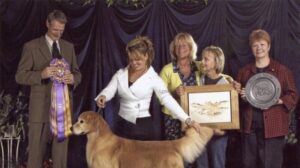
Essential tips for judging Golden Retrievers, including understanding breed standards and addressing misconceptions about proportions & coat.

Explore the key elements of judging Golden Retrievers with insights on standards, judging criteria, and the importance of true breed type.

Interview with Kori Bevis, handler of a Golden Retriever known as “Baker,” the 2022 AKC Obedience Classic Winner.

Interview with Jane Bronson, handler of “Phire,” the 2022 AKC Agility Invitational Winner in the 20″ height category.
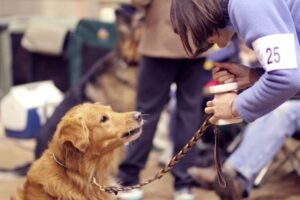
When training a dog, there is nothing more damaging to a relationship than assuming willful disobedience. Read more.

Helen Dorrance Ducat breeds Golden Retrievers, American Eskimo Dogs, & Whippets, sharing insights on breeding, health, and industry trends.

Ginny and Aaron are the breeders behind Kincer Ethos Golden Retrievers. Read about the kennel’s beginnings, puppies, and much more!
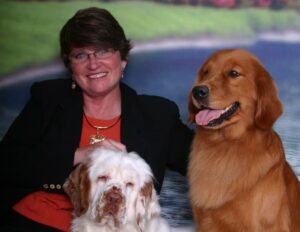
Collette Jaynes is the breeder behind Jazzin Kennels. Read about the kennel’s beginnings, the dogs, the puppies, and more!
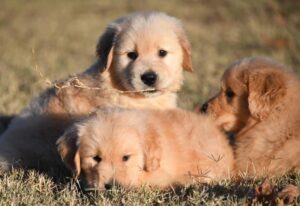
Marissa Hendrix is the breeder behind Arkgold Golden Retrievers. Read about the kennel’s beginnings, the sires, the dams, and more!

Ginny & Aaron Kincer: Where do we live? How many years in dogs? How many years as a breeder? I live with my husband, Aaron, in Chattanooga
The best way to ensure a long and happy relationship with a purebred dog is to purchase one from a responsible breeder. Not sure where to begin?
Contact the National Parent Club’s Breeder Referral Program, which is listed on the AKC Breeder Referral Contacts page.
